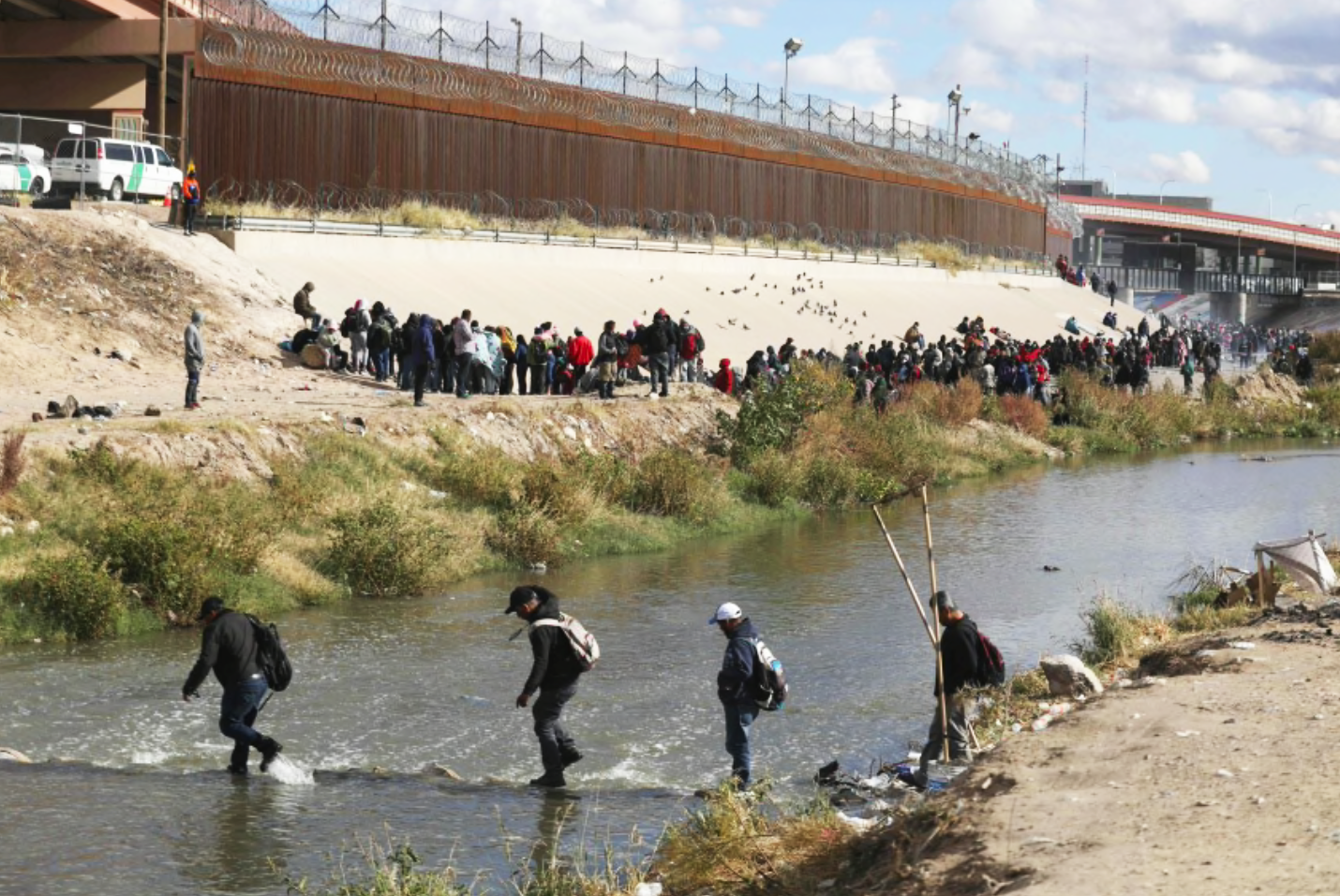By Caitlin Thompson || Cronkite Borderlands Project
Dec. 16, 2022
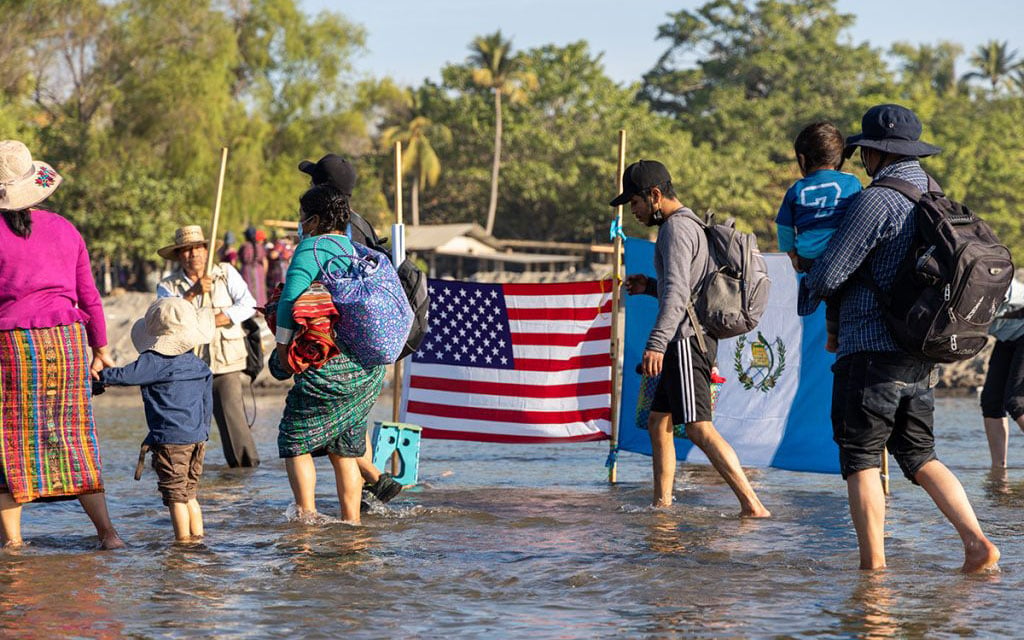
Title 42 is a health regulation, not an immigration law, but over the last two-and-a-half years, it’s been used to keep immigrants from coming into the country across the U.S.-Mexico border. Since former President Donald Trump first implemented the policy in response to COVID-19 in March 2020, Title 42 has been used to expel migrants nearly 2.5 million times.
The Biden administration has continued to use Title 42 throughout the pandemic. The policy was set to end on May 23, but that was delayed by judicial rulings. Instead of ending, Title 42 was expanded in October to add Venezuelans to the list of people who can be expelled under the regulation, a list that also includes people from the Northern Triangle, Haiti, Nicaragua and Cuba.
On Nov. 15, a federal district judge in Washington, D.C., ruled that Title 42 was “arbitrary and capricious” and should not have been implemented. He ordered the policy to be lifted and gave the Biden administration five weeks to prepare.
The looming end of Title 42 has set immigrant aid groups, local governments and federal agencies on the border rushing to prepare for an expected influx of people. It has exposed a gap in the response to immigration, as nongovernmental organizations get ready to bear the brunt of the responsibility of caring for immigrants and asylum seekers after they are released by CBP.
Border Patrol gets ready
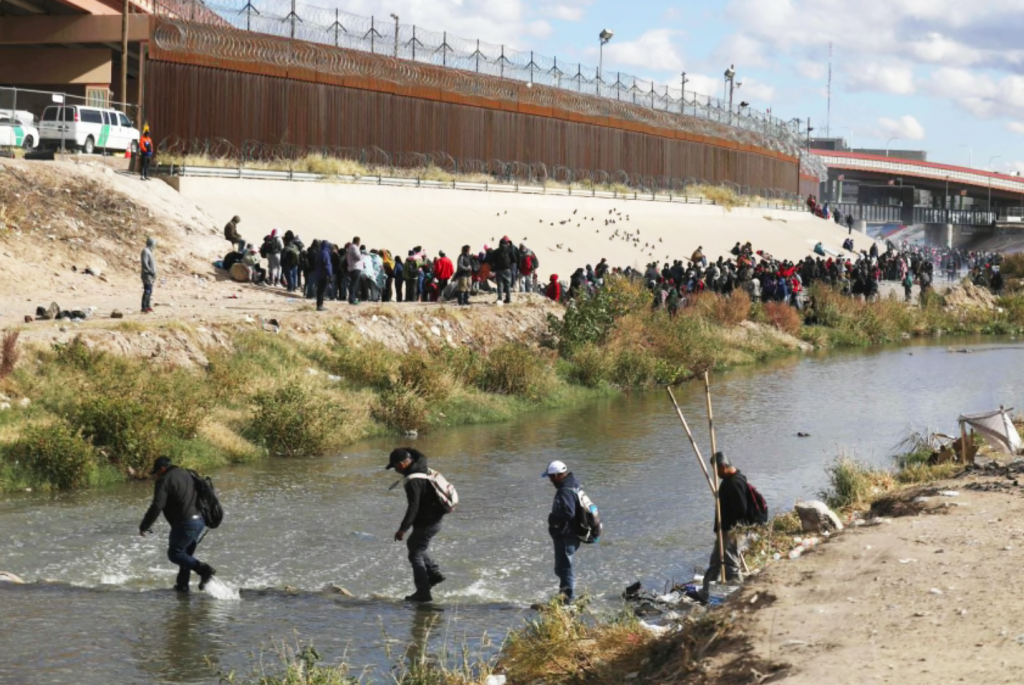
The Tucson Sector of the Border Patrol covers 262 miles of the border and encompasses Pima, Santa Cruz and Cochise counties, including Tucson and the border city of Nogales. Even with Title 42 still in place, the number of people trying to cross the border in this area has increased in recent months. Since the start of October, encounters between Border Patrol agents and migrants has increased by 13% from the same period last year. That’s an average of 700 encounters a day, according to Border Patrol data.. || Photo by Caitlin Thompson/Cronkite Borderlands Project.
In fiscal 2022, about 77% of encounters with people trying to enter the U.S. in the Tucson Sector resulted in expulsion under Title 42.
Pima County officials expect another 400 migrants and asylum seekers will pass through the area each day when Title 42 expires, according to a Nov. 23 letter from the county administrator to the county board of supervisors.
At Border Patrol, work is already underway to get ready for the increase. Staffing is a particular focus.
The border fence is replaced with vehicle barriers on the Cocopah Reservation outside Yuma. It’s one of the busiest crossings in the Yuma Sector, according to Customs and Border Protection spokesman John Mennell. (Photo by Caitlin Thompson/Cronkite Borderlands Project)
The rise in encounters comes amid a decline in staff numbers in the Tucson Sector, according to Steve Mahoney, the executive officer of operations. There are currently roughly 3,200 agents and officers, a 24% drop in the last decade.
“We are asking our agents to do more and more just because we just don’t have the manpower that we did 10 years ago,” Mahoney said.
When Title 42 was expected to end in May, Homeland Security Secretary Alejandro Mayorkas released a plan to address those staffing shortages, among other things. DHS deployed an additional 600 agents and officers and brought staff from other parts of the country to border states. The plan also included adding 300 Border Patrol processing coordinators to handle intake of recently arrived migrants, taking the burden off agents.
“If we can help free those people up and get a contractor to cover that job so that we can put a Border Patrol agent out in the field doing what they signed up to do, I think everybody sees that as a win,” Mahoney said.
The plan was put into place in spring and remains active, said John Mennell, a CBP spokesman in Arizona.
For agents on the ground, the end of Title 42 does not change their day-to-day work, said Robert Ortiz, a Border Patrol agent in the Tucson Sector.
“For an agent, it doesn’t matter what policy it is. It’s just what our job is to do that day, that shift, that that’s what we’re going to do. It’s just what the powers that be decide,” Ortiz said. “For us, at the end of the day, we’ve got to go do our job within that policy.”
Nicholls remembers one three-day period, in particular, when 5,000 to 6,000 people came across the border into his small town. Border Patrol was “overwhelmed” and started releasing people into the community, he said.
“They were just literally to the streets, to transportation areas. I wouldn’t call them hubs because one is a bench where Greyhound picks up and the other one’s a parking lot where our shuttle system picks up. So they weren’t really in any sort of facility,” Nicholls said.
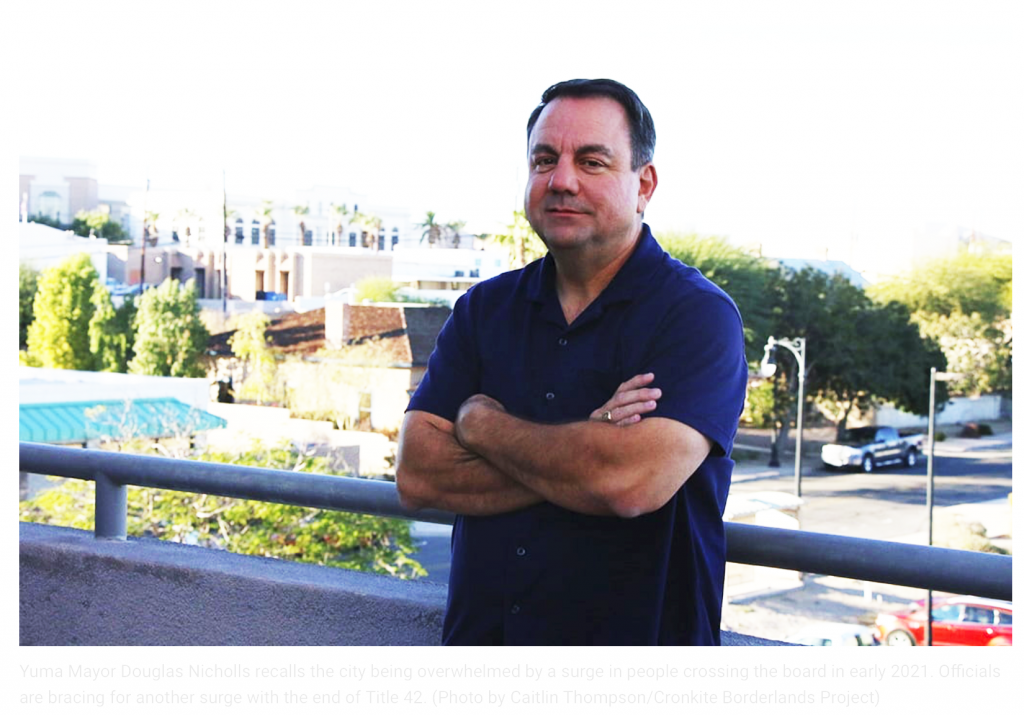
People started moving through the community looking for help and shelter, Nicholls said. There isn’t a particular nonprofit that provides services specifically to recently arrived migrants and asylum seekers, but groups like the Regional Center for Border Health stepped up to help.
The mayor declared a local emergency that remains in effect today.
Nicholls is trying to avoid that situation as he looks towards the end of Title 42.
“For me, the question with Title 42 is how quickly can we get back to those numbers and have a situation that’s beyond the capacity of the system that’s set up? And I think it could happen within days, really,” he said.
Nicholls has been asking for federal planning and support, but says it has not yet materialized in a meaningful way.
“My anticipation was that if you remove something like Title 42 that’s having a positive effect on the situation, you should be replacing it with something else that could have an equal or greater effect,” he said.
Yuma Mayor Douglas Nicholls recalls the city being overwhelmed by a surge in people crossing the board in early 2021. Officials are bracing for another surge with the end of Title 42. (Photo by Caitlin Thompson/Cronkite Borderlands Project)
Who is responsible for caring for people?
The end of Title 42 raises questions about who is responsible for providing services for migrants and asylum seekers once they’re released by CBP. This includes everything from a place to sleep or get a shower and a meal to transportation to airports, so people can take the next step of their journey.
For Nicholls, the financial and logistical burden should not fall on local governments in cities like Yuma that do not have the resources to meet the demand.
“We don’t do housing. We don’t do health care,” he said. “We would have to learn to do them. And then there’s that learning curve that is just not effective.”
Nicholls is asking the federal government to step up. “It’s a federal issue,” he said.
But it’s not quite that simple. Border Patrol can only hold people for 72 hours. Once the determination is made to release someone, it’s no longer their jurisdiction, said Mennell, the CBP spokesman.
“We are fully responsible for their care, their feeding, whatever happens to them while they are in our custody. CBP wants to get everybody out of our custody as rapidly as possible, whether it’s to a state law enforcement agency, another federal law enforcement agency, Enforcement and Removal Operations, back to Mexico, whatever,” he said.
It falls on NGOs
There is a gap in who provides for recently arrived migrants and asylum seekers once they leave CBP custody, said Mary Miller Flowers, a senior policy analyst at the Young Center for Immigrant Children’s Rights.
RELATED STORY
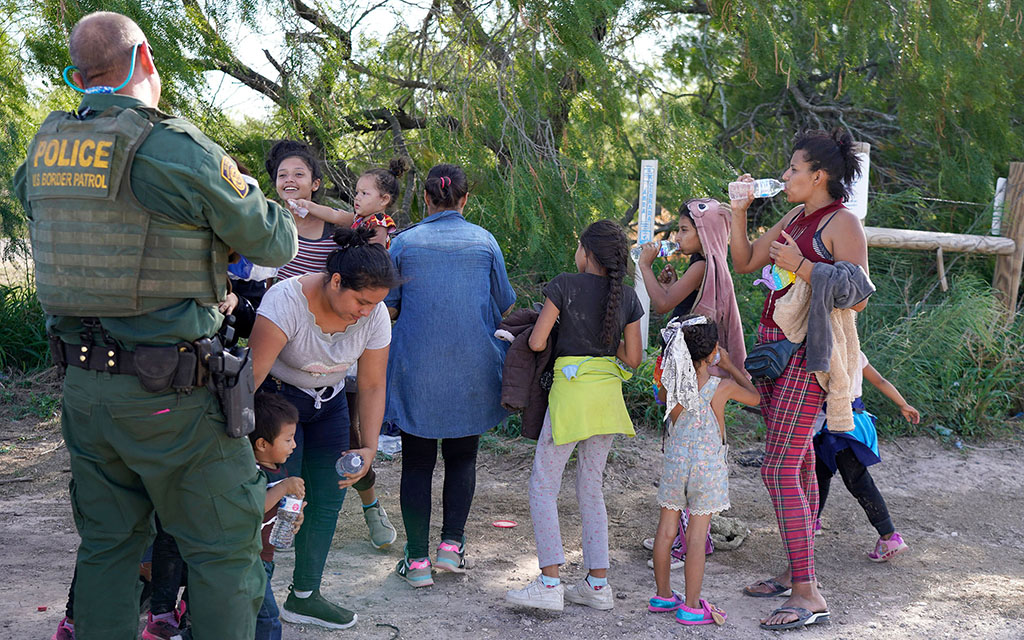
Southern border apprehensions hit record 2.4 million in fiscal 2022
“I think it’s intentional,” Miller Flowers said. “Once people get released from federal custody, whether it’s CBP or the Office of Refugee Resettlement, the government largely washes their hands of providing services or support for people.”
That gap gets filled by NGOs like Casa Alitas in Tucson. The Welcome Center is meant to be a short-term resource that provides for people only in their first hours or days in the U.S.
Casa Alitas’ capacity fluctuates, said Associate Director Diego Javier Piña Lopez. “It always depends on demographics. If you have a family coming through, your capacity is different for a family than a single male or single woman. We have to take that all into account,” he said.
In September, the number of people coming through the welcome center at Casa Alitas hit a high of 400 to 450 people a day, according to local news reports, 50% more than the typical intake.
“I think there’s no way not to feel overwhelmed. Today I felt overwhelmed with numbers just in general,” Piña Lopez said.
On one day in late November, about 400 people passed through the Casa Alitas’ purple door. The end of Title 42 will likely cause a substantial increase, and the team at the center is using the lead up to Dec. 21 to prepare.
“We’re going to be tested with Title 42 leaving. But we spent last week strategizing a little bit on what that looks like, and we’re going to keep on strategizing, planning,” Piña Lopez said. “Are there going to be challenges? Of course.”
There is federal money available to help NGOs respond to the increase in people coming across the border. The 2022 budget included $150 million for groups providing humanitarian assistance to migrants through the Federal Emergency Management Agency’s Emergency Food and Shelter Program. Piña Lopez said Casa Alitas gets some of that money.
Pima County is also helping Casa Alitas increase its capacity, according to Shane Clark, the county’s director of emergency management. The county is not using its own funds, but is helping Casa Alitas manage federal money. It also coordinates additional shelter, meals and transportation for recently arrived migrants and asylum seekers, and the county health department is testing people for COVID-19.
Border Patrol Agent Robert Ortiz looks into Mexico at one of the holes in the border fence near Nogales, where barbed wire and vehicle barriers are the only thing to stop migrants. (Photo by Caitlin Thompson/Cronkite Borderlands Project)
Clark said the goal is to build a system where NGOs are bearing the load of responsibility, with support from local government when needed.
“We always want this to be on the shoulders of the humanitarians that have stepped up to take on this task,” he said. “We have stepped up at times with personnel and with additional resources in order to temporarily serve Casa Alitas Welcome Center.”
It’s hard to predict how many people will cross the border when Title 42 ends and how many of them will take a seat along the colorful walls at Casa Alitas as they wait to move to their next destination.
The emphasis for Pima County is setting up the infrastructure and preparing a fluid plan so that if and when Title 42 ends, they are ready.
“The numbers always change,” Shane said. “The challenge here is acquiring the resources at the right time. And so while we are building the plans, we may not be able to flip the switch until Dec. 20.”

